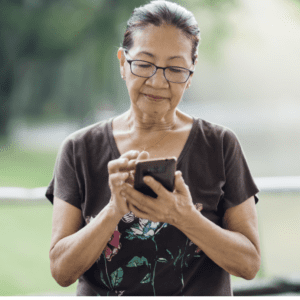Tech Alert: The Ongoing Development Of Technology Aimed At Seniors

Tech Alert: The Ongoing Development Of Technology Aimed At Seniors
October 6, 2021
The futurist Alvin Toffler once said, “Our technological powers increase, but the side effects and potential hazards also escalate.” For many if not most older adults, the pace of technological change and advances- just in a matter of years- has been both breathless and perhaps overwhelming. While so many of us benefited from the tech advances available during the pandemic- FaceTime, Zoom, online classes, to name a few- most of us also realize that there may be a downside to much of the technology aimed at older adults, including the potential for a loss of privacy and autonomy, not to mention becoming a potential target for scams or fraud. In fact, in a recent poll of older adults about the use of smartphone health apps, a majority of older respondents (72%) expressed concern about using such apps due to loss of privacy. So while we celebrate all of the convenience, efficiency, and value of tech products designed to enhance the lives of older adults, we need to remember there are potential hazards looming as well.
So what’s happening with new tech products and innovations for older adults? With the burgeoning senior population and its spending power, along with the increased need for caregiving and remote monitoring, there are a plethora of new companies and products hoping to capture the available senior dollars. And seniors are spending. According to a recent survey by AARP, older adults spent an average of $1144 on technology in 2020, up from the average of $394 spent in 2019. With the pandemic driving so many of us to stream and zoom, it’s no wonder we were all buying new smart TVs, smartphones, or tablets. And while the survey reported that costs, knowledge gaps, and privacy were reasons to hesitate about purchasing new technology, nonetheless the majority of older adults, including those 70 and above, claim to own a tablet, and 69% claim to use it every day. That increased internet usage coincides nicely with a recent study that suggests internet usage during retirement can boost cognitive function. For more on this study, point your clicker and read here.
Beyond entertainment, information gathering, and communication, what other devices or tech trends are out there focused on older adults? Probably the biggest area of innovation involves health monitoring and caregiving needs, especially as the majority of aging adults desire to “age in place” and yet family caregivers cannot always be on hand to help oversee or assist. According to Home Care magazine, the most commonly purchased tech products in the aging-in-place market involve medication management, fall detection, emergency response systems, fire prevention, and remote monitoring. While these sorts of innovations are essential due to the shortage (and expense) of caregivers, and the distance that often separates families, experts warn us to remember that technology can’t completely replace the human touch. We need to ensure in the process of innovation in the home that we are preserving the dignity and privacy of the person being cared for. But the dilemma remains that as we live longer, and have fewer caregivers, machines are going to need to fill in gaps and perhaps proactively identify problems in our aging population.
And some of the biggest names in technology are right there in the mix. For example, Apple’s newest operating system for its smartphones will feature a tracking and monitoring system that will detect your unsteadiness and risk of falling before an accident occurs. This makes sense, given the prevalence of falls among older adults and the potential serious harm that can result. They even plan to include short videos of home exercises to help with balance if your device determines you’re at risk. And Amazon is now heavily in the market of monitoring and connecting seniors with their families, whether they live in the community or a facility. For example, a recent opinion piece in Quartz touts the value of having an Amazon Echo Show device in the room of every older adult living in a long term care facility, so that invited family or caregivers can virtually “drop in” and visit without the senior needing to initiate a call. Moreover, Amazon is introducing something called Alexa Together, a new subscription service building on their Care Hub that, for $19.99/month, will allow multiple family members to check in on a loved one and can be set for fall detection mode, remote alerts as reminders and even an urgent response service in case of problems. For more about this new option, cue up the family meeting and click here.







